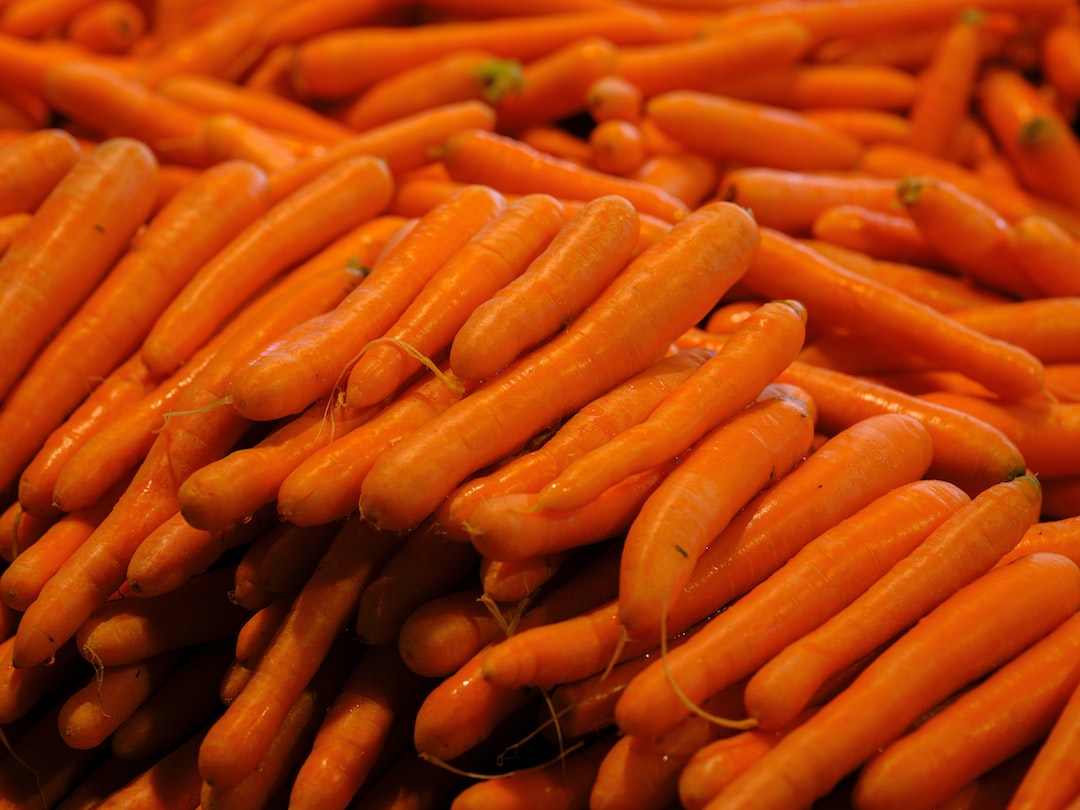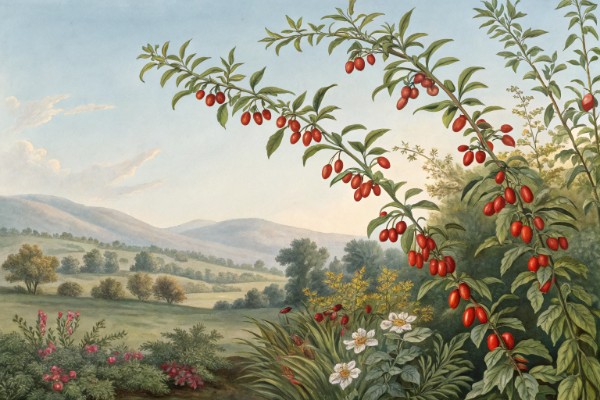Growing Carrot Tips for Healthy Roots and Abundant Harvests

Growing Carrot
Growing carrot starts with digging in loose, stone-free soil to let the roots stretch deep. Aim for full sun and consistent moisture, and plant seeds directly outdoors in early spring or late summer to sidestep summer heat. With simple effort and savvy timing, you'll pull delicious, vibrant carrots from your garden—fresh, sweet rewards worth every bit of dirt under your nails.
Growing Carrot: soil built for straight, sweet roots
I pull the fattest carrots from loose, stone-free soil with a steady pH of 6.0 to 6.8. I work in mature compost months ahead, skip fresh manure, and loosen the bed 12 inches or 30 cm so the taproots cruise instead of fork.
On heavy clay, I switch to raised beds and add coarse sand plus sifted compost. A broadfork opens the profile without flipping layers, which keeps the soil biology humming.
Seeds, sowing, and the patience game
Fresh seed matters because carrot seed loses vigor fast after year two. I sow shallow at 0.25 inch or 6 mm, then firm the surface so seeds make contact.
Carrots germinate slowly, so I keep the surface evenly moist for up to 21 days. A strip of burlap or a board over the row locks in moisture, and I lift it the moment I spot green threads.
Temperature and timing that hit the sweet spot
Carrots grow best in cool conditions, about 60 to 70 F or 15 to 21 C. Germination runs well from 55 to 75 F or 13 to 24 C, which I track with a cheap soil thermometer.
I succession sow every 2 to 3 weeks until midsummer. In heat, I use 30 percent shade cloth and water twice daily with a fine rose to keep the crust from forming.
RHS: “Carrots grow best in light, stone-free soils.” Royal Horticultural Society, Growing Carrots.
Water and fertility for calm, steady growth
I aim for 1 inch or 25 mm of water per week, delivered by drip to avoid leaf disease and splitting from wild swings. Mulch lightly with clean straw once seedlings are established to stabilize moisture.
Low nitrogen keeps roots smooth, while adequate phosphorus and potassium build density and flavor. Salty soils stall carrots, so I keep soil EC on the low side and avoid high-chloride fertilizers.
Thinning without carnage
I thin at the first true leaf to 1 to 2 inches or 2.5 to 5 cm. I snip extras at the soil line instead of yanking to avoid loosening neighbors.
Pelleted seed reduces thinning and pairs well with a small hand seeder. For baby carrots, I thin to 1 inch and harvest sooner for tender bunches.
Weed control and the crust problem
Carrots hate competition, so I stale-seed the bed, flame emerging weeds, then sow. A quick pass with a collinear hoe between rows keeps the top inch loose and clean.
I sometimes sow a single radish seed every foot as a marker row. It pops fast and guides my early weeding before carrots show.
Pests and diseases I actually see and stop
Carrot rust fly rides the scent of bruised foliage, so I thin on breezy afternoons and cover beds with fine insect netting rated near 0.8 mm. A 24 inch or 60 cm high barrier also helps, since adults fly low.
Rotate carrots at least three years to limit Alternaria and Cercospora leaf blights. I water at soil level, space for airflow, and pull plant debris fast after harvest.
University of California ANR: “Ideal temperatures for carrots are 60 to 70 F, and seed germination is best at 55 to 75 F.” UC Vegetable Production Guides.
Variety selection that matches soil and goals
- Nantes: straight, cylindrical, crisp, and sweet for raised beds and loams; 60 to 70 days.
- Danvers: tapered shoulders and forgiving in mixed soils; handles slight compaction.
- Chantenay: stout, triangular roots for heavier clay and shallow beds.
- Imperator: long, slender roots for deep sandy loams and bunching.
- Parisian/Atlas: round mini types for containers and rocky spots.
- Kuroda: handles heat better, stays sweet in warm spells.
- Bolero, Napoli, Nelson, Mokum: reliable market favorites with good disease tolerance and uniform shape.
- Purple Haze, Atomic Red, Jaune du Doubs: color-rich types with anthocyanins and beta carotene for striking plates.
I test new lots in short rows, then scale up the winners. Flavor climbs after light frosts as starch shifts to sugars, which I taste every fall in my beds.
Harvest, flavor, and storage
I harvest when shoulders reach full color and the crown fills out, usually 60 to 85 days by type. I twist tops off right away to stop moisture loss, then dunk roots in cold water to chill.
For field holding, I blanket rows with 4 to 6 inches or 10 to 15 cm of straw once nights dip near freezing. In storage, I keep carrots away from apples, since ethylene can cause bitterness.
USDA Handbook 66: “Store carrots at 32 F or 0 C and 98 to 100 percent relative humidity for maximum life.” USDA, Postharvest Technology of Horticultural Crops.
Yields and spacing that pay
A well-tended 10 foot or 3 m row can give 6 to 8 pounds or 2.7 to 3.6 kg of carrots in my trials on loamy soil. I hit that mark by thinning on time and watering evenly during bulking.
For density plantings, I keep in-row spacing near 1.5 inches or 4 cm with 12 inch or 30 cm paths. That layout balances yield and root size for easy harvest.
Common mistakes and fast fixes
- Forked roots: stones, fresh manure, or nematodes; sift soil and add only mature compost.
- Hairy roots and lush tops: excess nitrogen; shift to a balanced preplant and skip late N.
- Splitting: drought followed by heavy irrigation; use drip and steady scheduling.
- Spotty stands: dry crust or heat; board or burlap covers and light, frequent misting.
- Leaf blight: tight spacing and overhead irrigation; thin and water at soil level.
- Green shoulders: sun exposure; hill soil or mulch lightly around crowns.
Advanced tweaks that move the needle
I pre-germinate seed in a paper towel at 68 F or 20 C for 48 to 72 hours, then sow sprouted seed with extreme care. In summer, I pre-chill seed for a day to sync germination in warm beds.
A weak kelp and calcium drench at first true leaf has helped with tip breakage in my sandy beds. I also mix seed with dry sand for even spacing when I skip pelleted lots.
Companions, rotations, and cover crops
I follow peas or beans with carrots to ride the gentle nitrogen bump without overdoing it. Alliums nearby confuse pests and dill flowers recruit helpful hoverflies.
I avoid back-to-back Apiaceae like parsnip and cilantro in the same bed for at least three years. Oats and pea cover crops before carrots build tilth and leave a crumbly seedbed.
Container and small-space Growing Carrot
I use at least 12 inches or 30 cm of depth with a peat-free mix cut with 30 percent coarse sand. Parisian or Atlas types thrive in 2 to 3 gallon or 7.5 to 11 L pots with steady bottom watering.
For balconies, I tuck a drip line on a timer and shade the pot during heat spikes. Flavor rivals bed-grown if moisture stays steady.
Buying guide quick hits for Growing Carrot
- Seeds: choose varieties matched to soil depth, consider pelleted seed for precision, and buy fresh each season for strong stands.
- Seeders: hand jab seeders work for small beds; adjustable roller seeders shine for long rows and uniform spacing.
- Covers: 0.8 mm insect mesh blocks carrot flies; 30 percent shade cloth keeps summer sowings cool.
- Fertility: preplant with a modest P and K blend if a soil test shows low levels; avoid high-chloride potassium sources.
- Irrigation: 1 gph or 4 Lph drippers spaced 6 to 8 inches or 15 to 20 cm deliver calm, even moisture.
- Tools: flame weeder for stale seedbeds, collinear hoe for thread-stage weeds, and a soil thermometer for seedbed calls.
Mini FAQ from the patch
- Why do roots fork? Stones, compaction, fresh manure, or root knot nematodes.
- Why are carrots bitter? Heat stress or ethylene exposure in storage; cool the crop and store away from apples.
- Can I transplant carrots? Direct sow works best, though mini types in firm soil blocks can succeed with a gentle touch.
- Ideal pH? 6.0 to 6.8 with low salinity.
- How do I beat carrot fly? Fine insect netting, clean thinnings, and crop rotation.
- How long to germinate? 6 to 21 days depending on temperature and moisture.
Field notes and a taste memory
The best carrot I ever pulled came after a week of 34 F or 1 C nights and bright, dry days. It snapped like a cold apple and tasted of sugar and pine, the kind of flavor you only get when Growing Carrot with steady hands and a cool season plan.
Cheatsheet: Essential Carrot Growing for Vibrant Roots
🌱 Site & Soil Prep
- Prep: 30 min
- Sun: 6+ hrs daily
- Soil: Loose, sandy, stone-free, pH 6.0–6.8
- Enrich: Compost, aged manure—no fresh manure
- Depth: Loosen soil 12 in (30 cm)
🌡️ Sowing & Spacing
- Sow: 10 min
- Timing: Soil 50–75°F (10–24°C)—2 wks before last frost
- Depth: 1/4 in (0.5 cm)
- Spacing: 2 in (5 cm) apart; rows 12 in (30 cm) apart
- Tip: 85% germination with fresh seed (use yearly)
💧 Watering & Mulching
- Care: Ongoing
- Water: 1 in (2.5 cm) weekly—steady, never soggy
- Mulch: Retain moisture, block weeds; use straw/fine compost
✂️ Thinning & Feeding
- Thin: At 2 in (5 cm) tall, to 2 in (5 cm) apart
- Feed: K-rich, low N fertilizer midway (optional)
- Stats: Thinning improves root shape & size by 25%+
🛡️ Pests & Problems
- Rotate: Avoid planting after other umbellifers (parsley, celery)
- Net: Fine mesh deters carrot fly
- Avoid: Overwatering, which splits roots
🕰️ Harvest & Storage
- Harvest: 10 min
- Harvest: 60–80 days; roots 3/4–1 in (2–2.5 cm) diameter
- Store: In sand, cool 32–40°F (0–4°C), high humidity
- Tip: Flavors peak after light frost
🛠️ Tools and Products You'll Need
- Carrot seeds (choose Nantes, Chantenay, or Danvers)
- Compost or aged manure
- Hoe, rake, garden fork
- Watering can or drip hose
- Mulch (straw, compost, or leaf mold)
- Fine mesh/net (pest protection)
🥕 Nutrition & Benefits
High in beta-carotene, vitamin K1, and fiber. Homegrown carrots deliver 30% more vitamin A than most store-bought roots.
Frequently Asked Questions about Growing Carrot
What soil conditions best support healthy carrot growth?
Carrots thrive in loose, deep, and well-draining soil, rich in organic matter. Remove stones and debris to encourage straighter root development. Maintaining soil pH levels between 6.0 and 6.8 fosters optimal nutrient absorption.
How can gardeners ensure proper spacing for successful carrot crops?
Proper spacing helps carrots develop fully. Sow seeds about 1/4 inch (0.6 cm) deep and roughly 2 to 3 inches (5–8 cm) apart. Leave rows spaced approximately 12 inches (30 cm) apart to facilitate adequate airflow and growth.
How often and how much water do carrots require?
Water carrots consistently, providing about 1 inch (2.5 cm) per week. Adjust watering slightly during dry periods, aiming to keep the soil evenly moist without causing sogginess, to prevent splitting and promote uniform growth.
What steps can prevent common carrot pests and diseases?
Practice crop rotation and keep the garden free from weeds and debris. Covering plants with floating row covers deters pests such as the carrot rust fly. Implementing companion planting, such as onions or chives, also discourages common pests.
When is the ideal time to harvest carrots?
Harvest carrots approximately 60–80 days after sowing, when roots measure around 1/2 to 3/4 inch (1.3–2 cm) in diameter at the top. For the sweetest flavor, harvest carrots in the early morning or late evening during cooler temperatures.
How should carrots be stored to maintain freshness?
After harvesting, remove carrot tops promptly to prevent moisture loss. Wash and dry carrots thoroughly, then store in a cool location or refrigerator at temperatures between 32°F to 40°F (0°C to 4°C). Proper storage conditions preserve freshness for several weeks.
Growing carrot isn’t about chasing perfection—it’s about getting the basics right and letting the roots do the heavy lifting. Start with loose, stone-free soil, keep your watering even, and go easy on the nitrogen. Thin your seedlings—yes, ruthlessly—if you want those sweet, straight roots. Good timing and a little patience pay off come harvest. Rotate your crops, don’t crowd your beds, and you’ll sidestep most headaches. If you’re already hooked on root crops, try your hand at growing celeriac or growing jicama for a twist. In the end, growing carrot is about trust—trust in dirt, in weather, and in the process. The payoff? Crisp, sweet carrots that taste like real food, not supermarket afterthoughts. Keep it simple. Let the roots speak for themselves.



